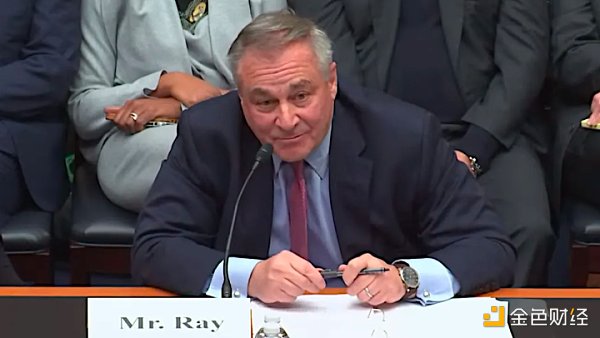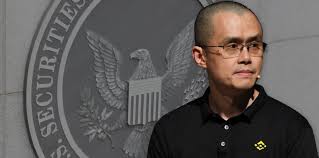Are the 10 Web3 directions released by LianGuairadigm really the future of the industry?
Are LianGuairadigm's 10 Web3 directions the industry's future?Author: Blockchain Knight
Last week, the well-known Web3 investment institution LianGuairadigm announced 10 Crypto areas that it has been exploring on its official website, which has attracted widespread attention in the industry. What is LianGuairadigm and why are their views so valued?
First, let’s take a brief look at LianGuairadigm. LianGuairadigm was co-founded by Matt Huang, a partner at Sequoia Capital, and Fred Ehrsam, a co-founder of Coinbase, in 2018. The initial funding came from donations from Harvard, Yale, Stanford, and a $400 million injection from Sequoia. Over the past few years, they have successfully invested in well-known projects such as Uniswap, MakerDAO, Compound, Optimsim, and Starkware.
Next, we will briefly comment on these 10 Web3 directions for the readers to enjoy.
- LD Capital An Analysis of KasLianGuai, a POW Public Chain Based on the GHOSTDAG Protocol
- How far can a decentralized sorter go?
- The Battle of Tech Giants Digital Identity, Payments, Social Graphs, AI, and Universal Basic Income
1. Intent-based protocols and infrastructure
After several years of development, Web3 seems to have met the basic needs of many businesses. However, we have to admit that in the face of large-scale applications, Web3’s programs are still fragile and the infrastructure needs to be improved. Especially in terms of operational aspects, they often keep people at a distance. Therefore, if we can meet user needs while reducing entry barriers, it may bring new vitality to the industry.
2. Hooks based on Uniswap v4 (especially those focusing on LP profitability, loss, and rebalancing)
Regarding the topic of “hooks,” there is a simple understanding: if Uniswap is Taobao in 2013, as a small brand, would you like to open a store on it?
3. Rollup-centric infrastructure for a multi-chain world
It is less than three months away from the Ethereum Cancun upgrade. The story of L2 should be the most important direction in the mainstream narrative this year. As long as the core logic and value points of Ethereum remain unchanged, Rollup is the source of the new story. After all, “Flying” and “Prince” are both Maotai brands.
4. Shared sequencers
As a supplementary direction for L2, Sequencers can review or reorder certain transactions technically before transmitting them from L2 to L1 to gain benefits. Therefore, a decentralized approach is needed, and shared sequencers may effectively solve this problem.
5. On-chain games (the kind we would love to play)
GameFi will not die. The author thinks it is similar to “CryptoKitties” in 2017. Of course, if it is only “Fi,” perhaps it is not worthy of commendation. Therefore, LianGuairadigm also emphasizes playability.
6. Crypto-native social applications
Web3 social, as a huge narrative, has already emerged high-profile protocols such as Lens. But this is just the beginning. With the improvement of infrastructure, including the development of decentralized storage and computing, the spring of Web3 social may not be too far away.
7. Prediction Markets (Creating markets with real liquidity)
Prediction markets have been a topic of discussion for a long time, and since 2018, they have been mentioned by some hardcore players. However, so far, we haven’t seen anything truly interesting emerge, except for an increase in the frequency of mentions of “decentralized options” this year.
8. Stablecoin Payments/FinTech (As stablecoins mature and banking becomes more complicated)
Stablecoins are a battleground that everyone wants to conquer, no need to say more. But perhaps this direction may not be suitable for small players?
9. On-chain Treasury (A natural step after stablecoins and before other real-world assets)
From my observation, Polkadot seems to be the one that has played with the “treasury” the most, but will it be an essential part of the next entrepreneurial narrative? I have my doubts.
10. ZKP Applications (Currently, there is an oversupply of ZKP capabilities: application development lags behind scientific and applied research)
The Holy Grail, the Holy Grail, who will obtain it?
Looking at these 10 directions, LianGuairadigm seems to encompass all the mainstream narratives. However, I believe that innovation may not necessarily come from a specific direction. Perhaps sparks can be seen more at the “connections” between various sectors, just like BRC20 suddenly became popular a few months ago, as if no one mentioned it last year?
We will continue to update Blocking; if you have any questions or suggestions, please contact us!
Was this article helpful?
93 out of 132 found this helpful
Related articles
- Messari Overview of SandBox Development in Q2 2023
- EthCC Experience Cryptocurrency VCs Not as Good as Dogs, Applications Upgraded to Infrastructure
- A Week After the Renaming Predicting the 8 Major Changes That Will Happen to the ‘New Twitter X
- How is the OP ecosystem now? Is it worth investing in?
- The Tech Giants’ Battle of X Digital Identity, Payments, Social Graph, AI, and Universal Basic Income (UBI)
- After a massive layoff of 73%, can Star Atlas, a 3A masterpiece born in a bull market, still be launched as scheduled?
- After LSDFi, will the liquidity provided by derivative LPDFi trigger the next wave of DeFi narrative?






